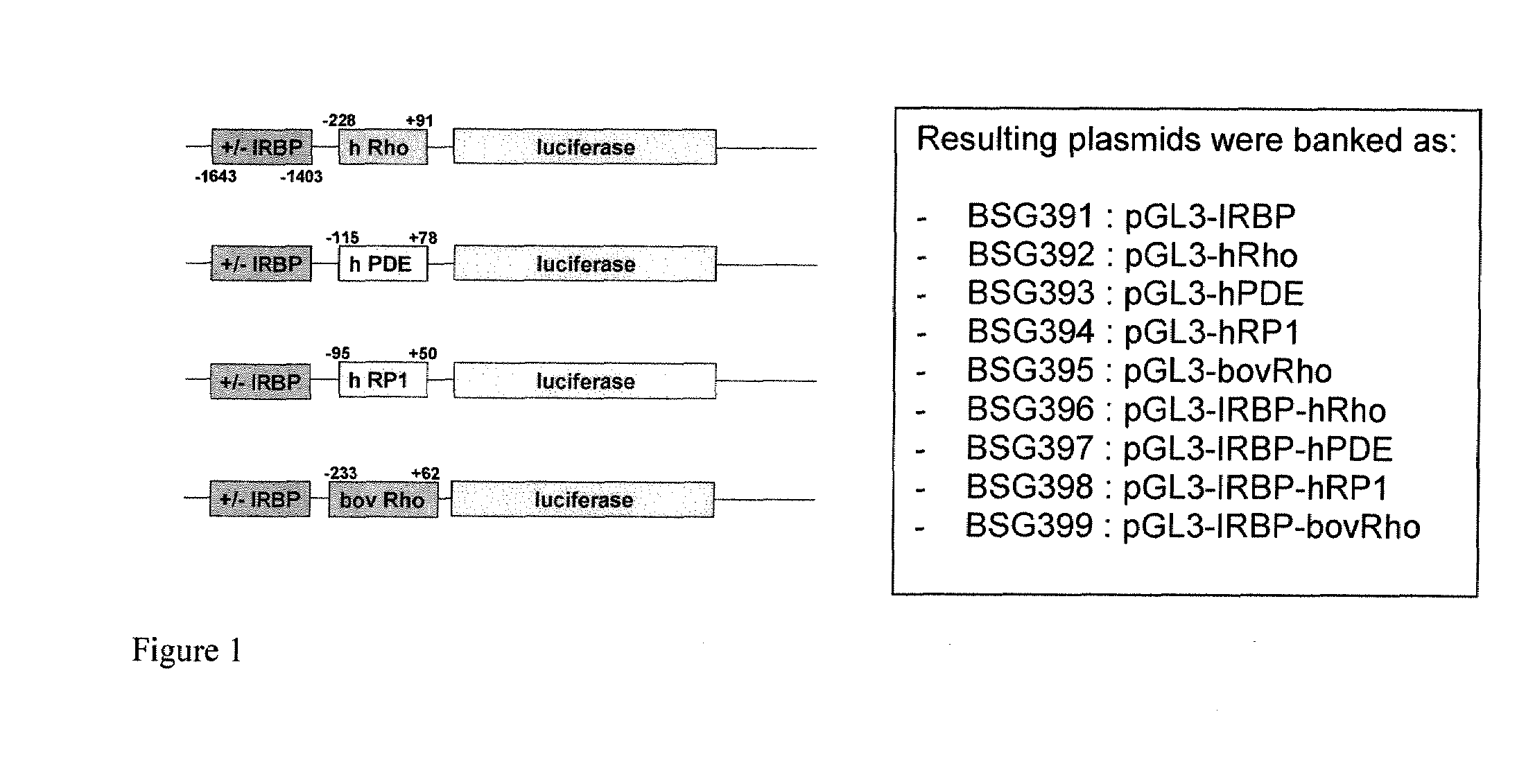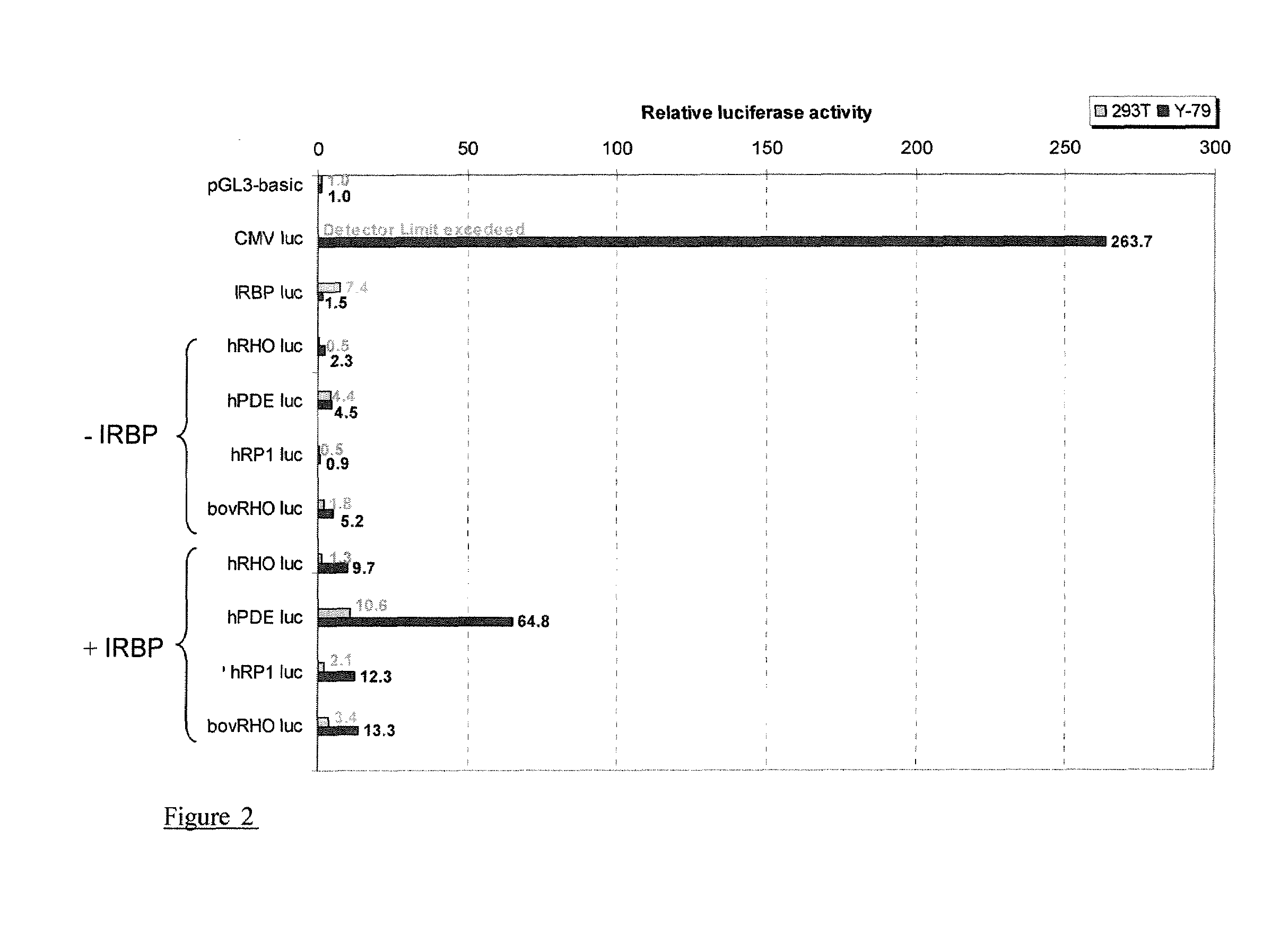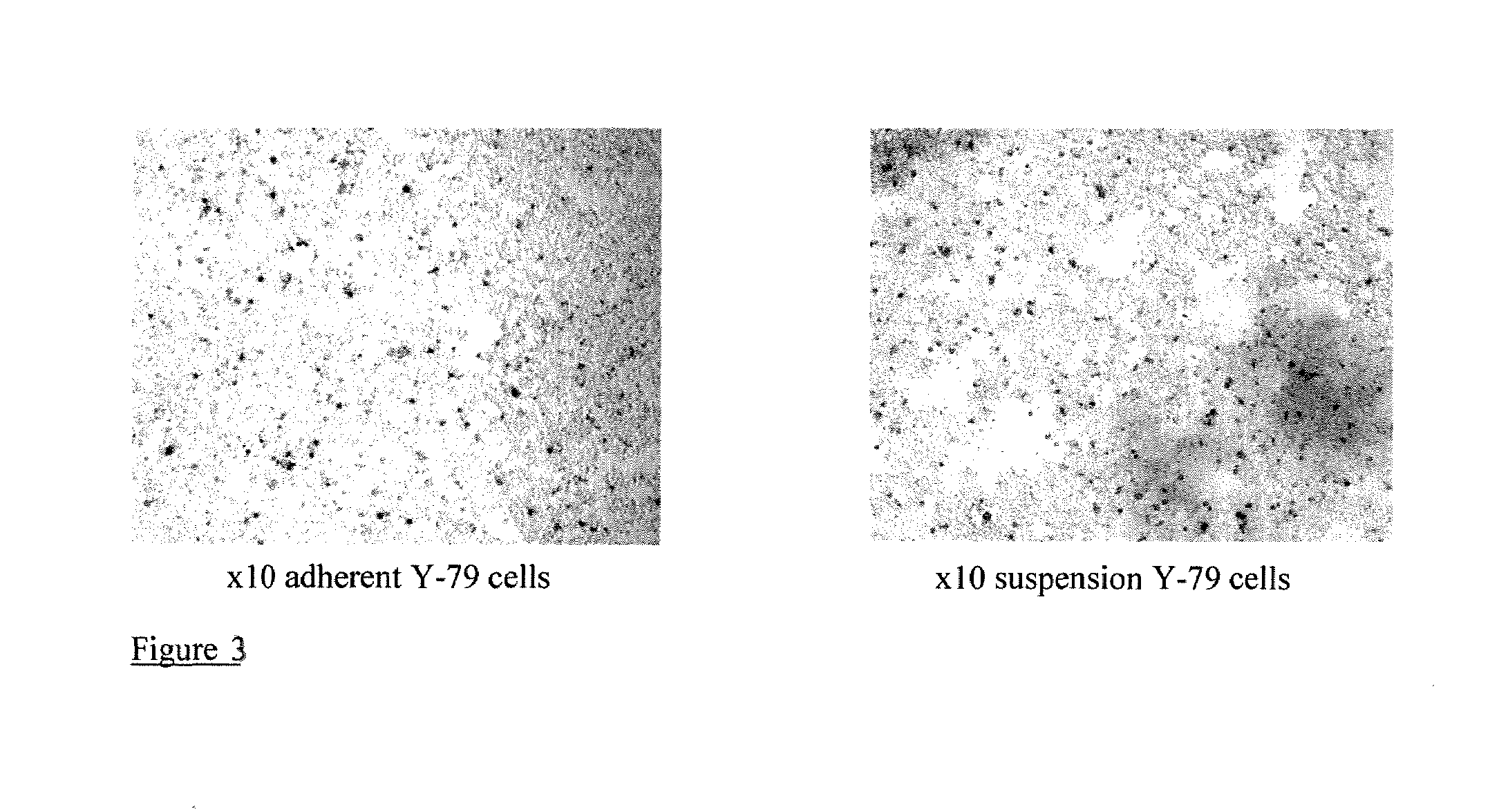Promoter construct
- Summary
- Abstract
- Description
- Claims
- Application Information
AI Technical Summary
Benefits of technology
Problems solved by technology
Method used
Image
Examples
example 1
Promoter Sequences
[0246]The sequence of the photoreceptor promoters were found via the DBTSS website (Database of Transcriptional Start Sites, located at http: / / dbtss.hgc.jp / ) using the access numbers showed in Table 1 below.
TABLE 1Gene IDUnigene IDGenBank IDh Rho6010Hs.247656NM_000539h PDE6B5158Hs.59872NM_000283h RP16101Hs.251687NM_006269h IRBP5949Hs.857NM_002900
[0247]Primers to amplify and isolate the photoreceptor promoter sequences were designed to span regions from (relative to the mRNA start site):[0248]−228 to +91 bp of the human rhodopsin gene[0249]−115 to +78 bp of the human PDE6b gene[0250]−95 to +51 bp of the human RP1 gene[0251]−1643 to −1403 of the human IRBP gene[0252]−233 to +62 of the bovine rhodopsin gene
[0253]Restriction sites were included in the primers with a view to direct subcloning into the pGL3-basic luciferase report vector (Promega).
example 2
Promoter Amplification and Subcloning
[0254]The promoter sequences were amplified by PCR using genomic DNA isolated from 293T cells as template* and PuRe Taq Ready-to-go PCR beads (Amersham Biosciences, 27-9558-01).
[0255]* except for the bovine rho promoter where the template used was the BSG378 plasmid.
[0256]PCR products were digested with BglII / HindIlI (for the promoters) or MluI / XhoI (for the IRBP enhancer element), gel purified and subcloned into the pGL3-basic plasmid upstream of the luciferase reporter gene.
[0257]The cloning steps resulted in the creation of a series of luciferase reporter plasmids containing the different photoreceptor promoters with and without the IRBP enhancer element (see FIG. 1).
[0258]All the promoters cloned into the pGL3-basic plasmid were sequenced by Lark Technologies to identify any possible problems arising from an incorrect sequence. All the promoter sequences were as expected.
example 3
Luciferase Reporter Assay in the Y-79 Cell Line
[0259]The cell specificity of the different truncated rhodopsin promoter constructs was evaluated by DNA transfection of a human retinoblastoma-derived cell line (Y-79) and a human embryonic kidney cell line (HEK-293T). The Y-79 human retinoblastoma cell line produces mRNAs encoding proteins unique to the photoreceptors and therefore, is the most suitable in vitro model to study transcriptional regulation of photoreceptor-specific genes (Di Polo et al. (1995) Proc. Natl. Acad. Sci. 92:4016-4020; Rakoczy et al., Methods in Molecular Medicine, Humana Press, Vol. 47, pp. 31-43).
[0260]All cell lines were maintained at 37° C. with 5% CO2.
[0261]Y-79 cells were cultured in suspension in RPMI-1640 supplemented with 20% foetal bovine serum (FBS), HEPES (10 mM), sodium pyruvate (1 mM), sodium bicarbonate (1 mM) and glucose (4.5 g / L) and seeded at a density of 8×105 cells / well in 24-well plates. For cell attachment, plates were coated with 80 uL / w...
PUM
 Login to View More
Login to View More Abstract
Description
Claims
Application Information
 Login to View More
Login to View More - R&D
- Intellectual Property
- Life Sciences
- Materials
- Tech Scout
- Unparalleled Data Quality
- Higher Quality Content
- 60% Fewer Hallucinations
Browse by: Latest US Patents, China's latest patents, Technical Efficacy Thesaurus, Application Domain, Technology Topic, Popular Technical Reports.
© 2025 PatSnap. All rights reserved.Legal|Privacy policy|Modern Slavery Act Transparency Statement|Sitemap|About US| Contact US: help@patsnap.com



